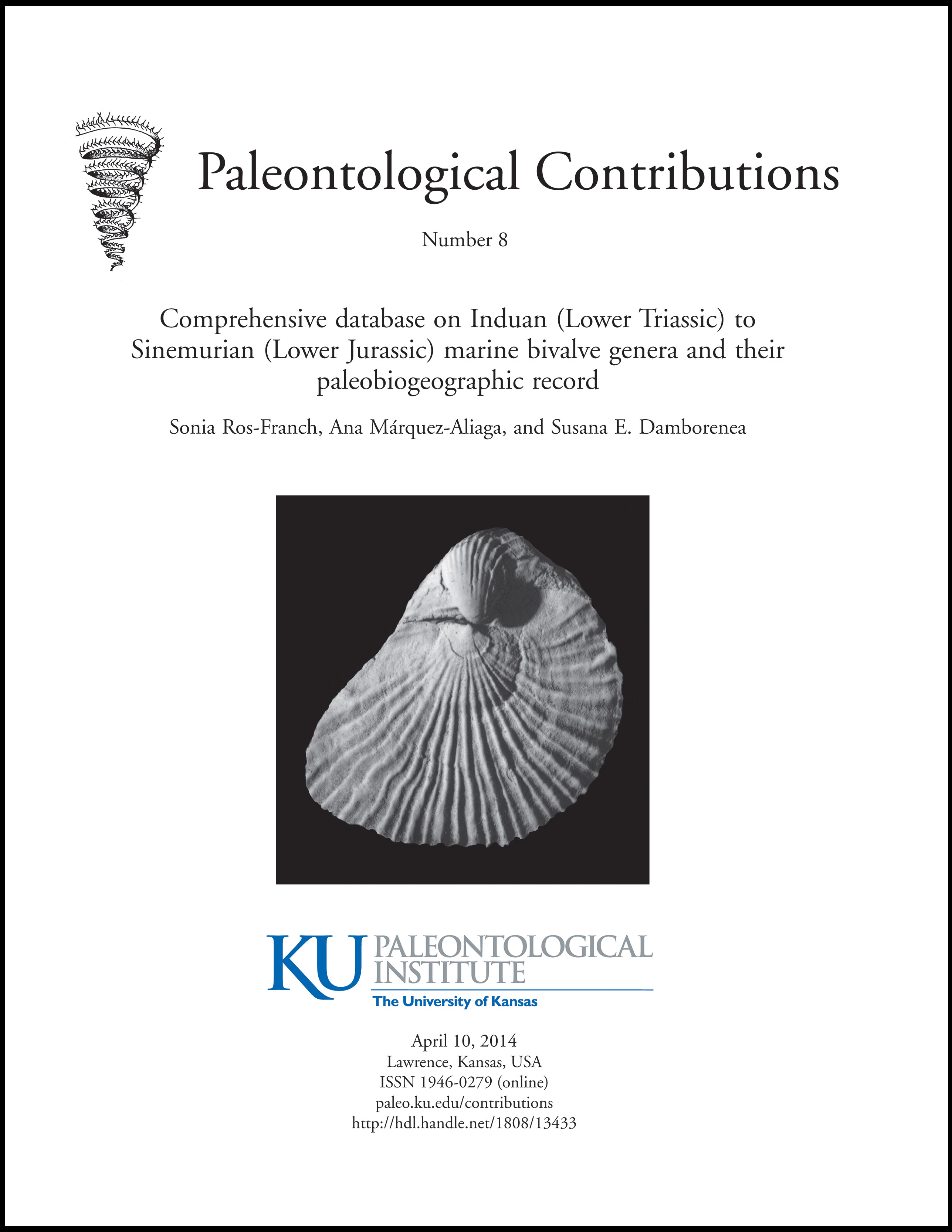Comprehensive database on Induan (Lower Triassic) to Sinemurian (Lower Jurassic) marine bivalve genera and their paleobiogeographic record
DOI:
https://doi.org/10.17161/PC.1808.13433Abstract
Marine bivalve genera that were described or mentioned for Triassic and Lower Jurassic deposits worldwide are reviewed in terms of their validity, stratigraphic range, paleogeographic distribution, paleoautecology, and shell mineralogy. Data were originally compiled at species level and are arranged systematically. A brief discussion for each genus includes synonymy, taxonomic status, and included subgenera, as well as current uncertainties about their validity and range. The distribution of each genus is also shown on paleogeographic maps. Type species and first and last appearances of each genus are also mentioned. We recognize as valid 281 genera and their included subgenera, and we further discuss 148 genera (arranged alphabetically) that were mentioned for the study interval but are not included for different reasons. The purpose of this paper is to provide an updated critical assessment of all available basic information for each genus, in order to obtain a sound database to study the generic paleodiversity of marine bivalves in the time interval from the Induan (Early Triassic) to the Sinemurian (Early Jurassic). This was a critical time for bivalve evolution and diversification, which began with the recovery from the Permian–Triassic extinction and ended with the recovery from the Triassic–Jurassic extinction.
Downloads
Published
Issue
Section
License
Copyright (c) 2014 Sonia Ros-Franch, Ana Márquez-Aliaga, Susana E. Damborenea

This work is licensed under a Creative Commons Attribution 4.0 International License.
- Authors retain copyright and the works are licensed under a Creative Commons Attribution 4.0 License that allows others to share the work with an acknowledgement of the work's authorship and initial publication in this journal.
- Authors are permitted and encouraged to post their work online (e.g., in institutional repositories or on their website) prior to and during the submission process, as it can lead to productive exchanges, as well as earlier and greater citation of published work (See The Effect of Open Access)


